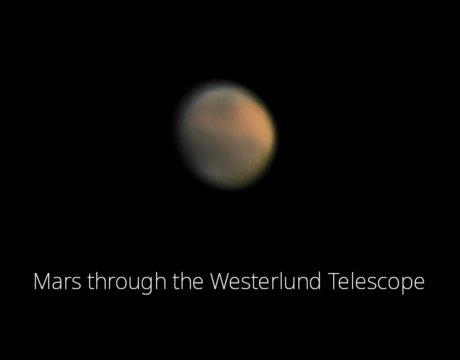Wondering how Mars looks like through a telescope?
A few days ago, on January 30, 2023, I captured Mars using a webcam (SPC900NC) attached to the Westerlund 90cm Telescope in Uppsala, Sweden. The focal length in the Nasmyth focus is 9 meter. The pixel size of the camera (5.6μm) thus leads to a pixel scale of ...
Finally! Comet C/2022 E3 (ZTF)
After desperately waiting for two weeks in a row, the weather here in Uppsala finally improved and we could observe the famous comet C/2022 E3 (ZTF) with our rooftop telescope at the Angström Laboratory, the so called "Westerlund Telescope". As the comet just ...
Comet C/2020 F3 (Neowise)
Comet C/2020 F3 (Neowise). Crop from an image taken at Postalm (Salzburg, AT) on July 21st, 2020 with a Nikon DF using an AF-S 50mm f/1.8 Nikkor at f/2.2 and ISO 1600. The exposure time was 15 ...
Mercury’s crust revisited
In today's volume of the "Earth and Planetary Science Letters", Michael M. Sori from the "Lunar and Planetary Laboratory" of the University of Arizona (US) writes about how he used data obtained with the MESSENGER (Mercury Surface, Space Environment, Geochemistry and ...
Spotting the zodiacal light in spring
The zodiacal light is a nocturnal phenomena that is revealed only to those who dare to escape the city lights. In spring, after sunset and once twilight fades away into a dark and moonless night, a gentle luminous band opens up when looking towards west. Its majestic cone ...
Observing Comet C/2013 US10 (Catalina)
Comet C/2013 US10 (Catalina) was first discovered by the Catalina Sky Survey on October 31, 2013. It originates from the Oort cloud, a vast spherical reservoir of comets far beyond Neptun. By chance, gravitational perturbations can push Oort objects into the inner solar ...







